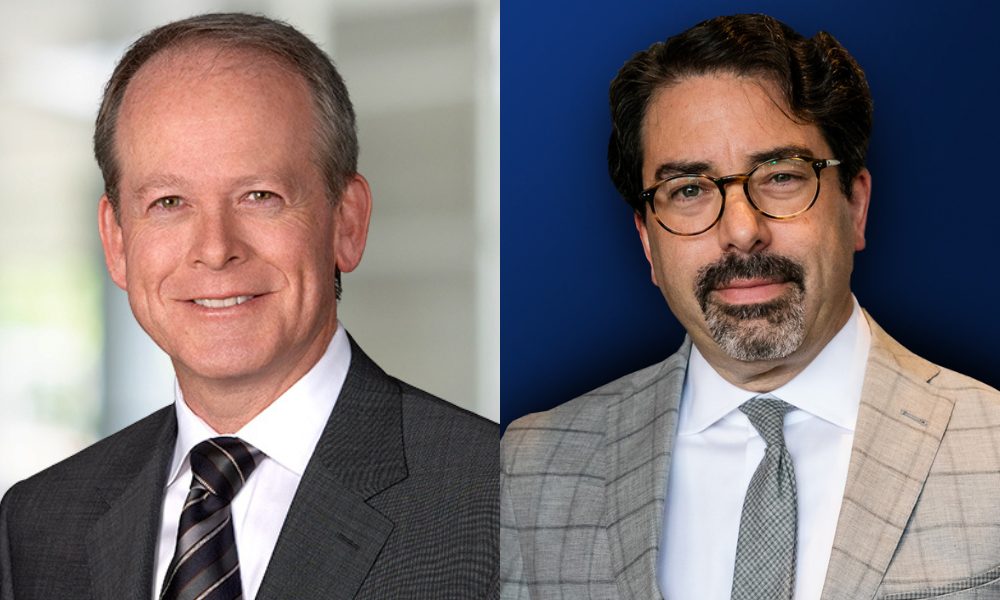Why new modern tontine and managed decumulation funds are just part of retirement planning

When Guardian Capital LP unveiled the GuardPath Managed Decumulation 2042 Fund and the GuardPath Modern Tontine 2042 Trust this month, the goal was to spark a revolution in retirement planning. Still, the firm is quick to stress one crucial point.
“This type of solution is intended to be part of a well-balanced approach to retirement planning,” Barry Gordon, Managing Director and Head of Canadian Retail Asset Management at Guardian Capital, told Wealth Professional in a recent interview. “We’re not trying to create a single-ticket solution for all circumstances.”
The Modern Tontine and the Hybrid Tontine Series of the Managed Decumulation Fund – a third solution that combines the income features of the decumulation fund and the payout from the tontine trust – are open only to investors born between January 1, 1957 and December 31, 1961. That cohort of people between 60 and 65 years old was purposely chosen, Gordon says, because of where they are likely to be, right now, in their financial planning journey.
Read more: 'Once you get to decumulation stage ... it's time to change your thinking'
“That's when advisors are having conversations with their clients about exactly these types of life decisions. When are you going to start taking CPP – do you do it now or do you defer it? How is your life insurance coverage? What does your estate planning look like?” he says. “These tools are all intended to be part and parcel of that broader conversation.”
The GuardPath Managed Decumulation 2042 Fund is a vehicle for investors to get a steady stream of high monthly distributions. Because the fund is built specifically to support retirees’ expenses, it’s designed to be drawn down to zero by the end of its investment horizon of 20 years.
“Guardian has been managing institutional money for over 60 years, and we were very mindful of sequence of returns risk in developing this strategy,” Gordon says. “We have risk controls and overlay strategies specifically designed to deal with tough market environments.”
Meanwhile, the GuardPath Modern Tontine 2042 Trust takes aim at longevity risk; it’s designed to achieve a significant payout after 20 years by adding several hundred basis points to retirees’ existing rate of return. That added return comes from a type of alternative asset that’s traditionally been overlooked across the investment industry.
“This is our attempt to harvest longevity credits,” says Professor Moshe Milevsky, PhD, who collaborated with Guardian Capital to design the new funds. “They depend entirely on how long people live, so they’re completely uncorrelated with the market.”
Read more: The benefits of alternatives in these volatile times
According to Milevsky, the market for longevity credits has traditionally been monopolized by insurance companies through the sale of life annuity products. But the modern tontine, which effectively unbundles the use of mortality credits from the concept of lifetime income, might be able to loosen that stranglehold.
“If you want guaranteed income for life, you still have to go to the insurance industry for an annuity. But they shouldn't have a monopoly on everything associated with that,” Milevsky says. “Lifetime income is one thing, and longevity credits are another. And that second piece is something that we’re providing through the securitized structure of the tontine trust.”
While many mutual fund advisors are also licensed as insurance professionals, not everyone might appreciate how longevity credits could be harnessed to fit within a client’s overall investment plan. And even though the strategies under the hood of the GuardPath solutions are tried and tested, the funds themselves are designed to work within a particular planning scenario. To help ensure they’re applied properly, Guardian Capital is investing heavily in education for advisors and investors.
“There is a need for educational outreach, and that’s where I play a role in all this as a professional educator,” Milevsky says. “We’re writing. We're creating lectures. We're creating explanatory materials. … Whenever you introduce something new and innovative like this, it's got to come with an instruction manual. And that's what we're trying to do in many formats, because we have to get this right.”



